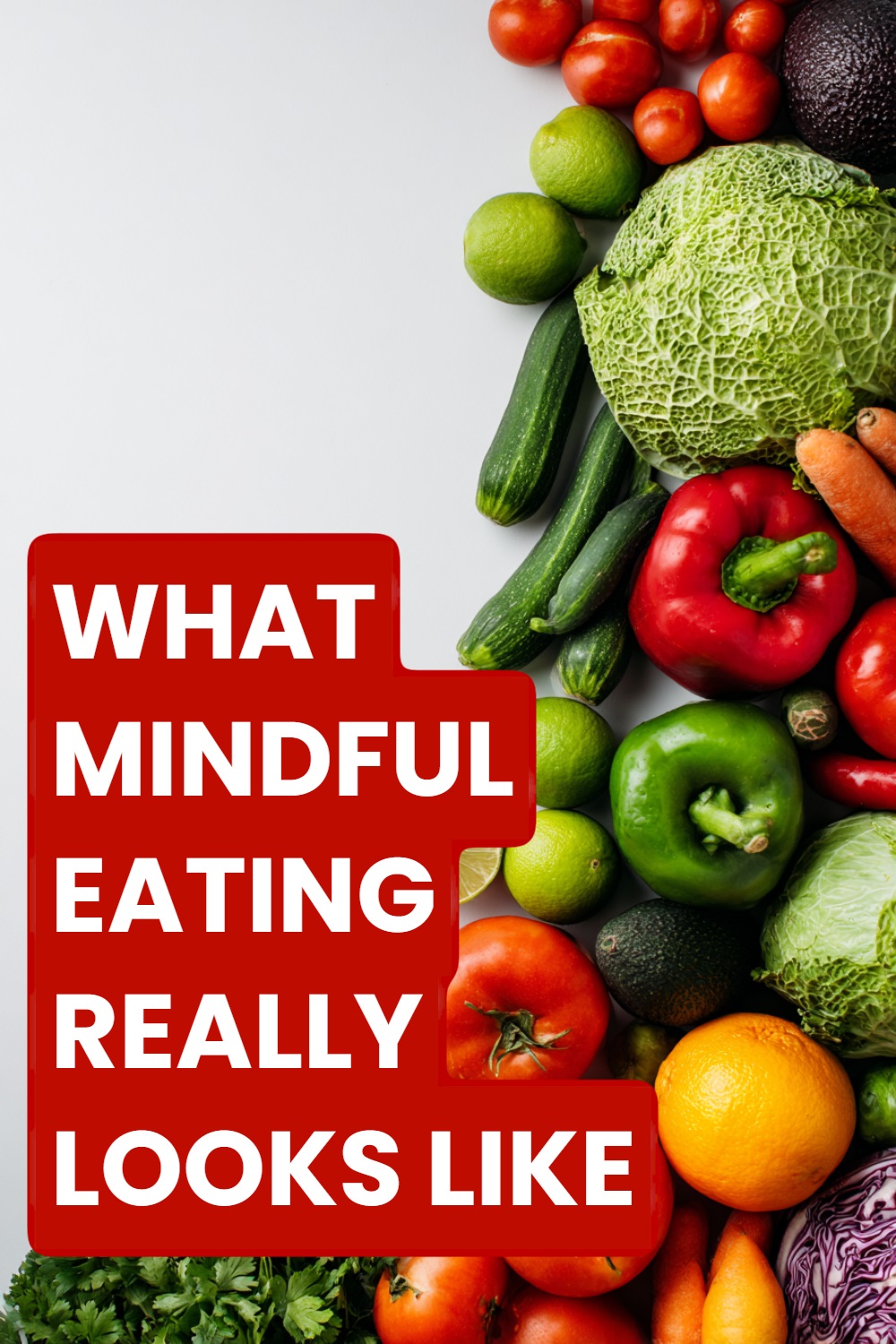When people hear “mindful eating,” they often picture something extreme.
Sitting in silence. Chewing each bite 30 times. No phone, no distractions, no joy.
That might work for a meditation retreat, but not for a normal Tuesday lunch at home or a quick dinner after work.
Here’s the truth:
Mindful eating doesn’t have to be perfect. It just has to be intentional.
And yes, it can absolutely happen in real life.
What Mindful Eating Actually Means
Mindful eating is about awareness.
It’s paying attention to what, why, and how you’re eating.
It’s noticing how food tastes and how it feels in your body.
It’s being present enough to enjoy it – or at least register that you ate.
It’s not about eating slowly, being calm all the time, or doing it perfectly.
It’s about building a little space between the craving and the choice.

The Problem With the “All-Or-Nothing” Version
Most people either ignore the idea completely or assume it has to be all-in.
They think: “If I can’t eat in silence with a full check-in ritual, what’s the point?”
But real mindful eating happens in the in-between moments. A few seconds of pause. A couple of check-ins. Choosing food that satisfies instead of food you “should” eat.
Small stuff that adds up.
A Real-Life Example
Let’s walk through a normal, practical mindful eating moment.
Scenario: It’s lunchtime. You’re working from home, a bit tired, and ready to eat.
Here’s how it could look:
- You pause for 10 seconds.
Just a quick check-in. Am I actually hungry? Do I want something light or filling? Hot or cold? - You choose a meal that satisfies.
Not just what’s “clean” or “low calorie.” You go for a wrap with eggs and avocado, plus some fruit on the side. Something that tastes good and actually fills you up. - You sit down to eat.
Even if it’s at your desk. You’re not eating while standing over the sink or in the middle of 3 other tasks. - You take a breath before starting.
Nothing dramatic. Just a moment to reset and shift into eating mode. - You eat without scrolling the entire time.
Maybe you’ve got your phone nearby, but you’re not doom-scrolling between every bite. You’re tasting the food and checking in occasionally. - Halfway through, you pause.
How’s the food? Still hungry? Getting full? Need anything else? - You stop when you’ve had enough.
Not stuffed. Not overly restricted. Just enough. Maybe there’s a few bites left. You save them or toss them. No big deal. - You move on with your day.
No guilt. No spiraling thoughts. Just a normal meal that you experienced and walked away from.
Why That Counts
That’s mindful eating.
It’s not about the perfect meal, perfect mindset, or perfect setting. It’s about noticing what’s going on while you eat. Making decisions instead of reacting on autopilot.
Even just one or two of those steps makes a difference.
What Most People Do Instead
Let’s be honest about what eating usually looks like:
- Skipping the hunger check-in
- Grabbing whatever’s fast without thinking
- Eating while scrolling or driving
- Finishing the whole plate just because it’s there
- Feeling overfull or unsatisfied
- Beating yourself up after
You don’t need to overhaul your entire routine. Just start by pulling yourself out of autopilot once or twice a day.
Small Shifts to Try
Here are a few ways to build mindful eating into your day without making it a whole event:
- Take one bite without distraction. Just notice how it tastes.
- Pause halfway through a meal. Ask: “How am I feeling right now?”
- Check in before grabbing a snack. “What do I really need here?”
- Sit down while eating. Even for a snack. Standing in the kitchen doesn’t help you feel satisfied.
- Put your phone down for the first few minutes of eating. You can pick it back up later if you want.
These aren’t rules. They’re tools. Use the ones that help.
It Doesn’t Have to Be Quiet or Perfect
Mindful eating can happen with the TV on. With kids around. At your work desk.
The goal isn’t total focus. It’s just more presence than usual.
If you’re used to eating in a blur, even a small pause will feel different.
What Changes Over Time
At first, you might not notice much. That’s normal.
But as you keep practicing:
- You start to feel your hunger and fullness cues more clearly
- You stop eating past the point of comfort as often
- You feel more satisfied from less food
- You start to want foods that make you feel good
- You get out of the guilt-restrict-binge cycle
It takes time. But it works.
Final Thoughts
Mindful eating isn’t about being perfect or doing it “right.”
It’s about being present with your food, even for a few moments. It’s about making choices instead of going on autopilot. And it’s something you can build, step by step.
Start small. Start messy. But start.
You don’t have to overhaul your life to eat in a more mindful way. You just have to notice what’s happening now – and respond with a little more awareness than before.
That’s enough.

